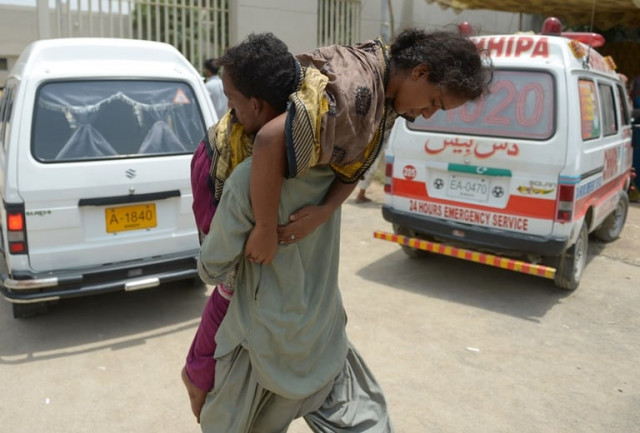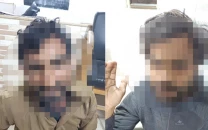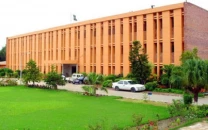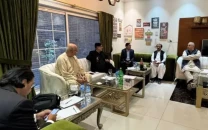Heatstroke deaths: Gaps, lapses show up in data on victims
Provincial administration unsure about victims’ details

Provincial administration still unsure about victims’ details. PHOTO: AFP
Serious lapses and discrepancies have begun to show up in the data collected on heatstroke victims in the southern Sindh province even as four more deaths were reported in Karachi on Thursday.
Nearly two weeks after sizzling temperatures first swept through Karachi, several gaps and discrepancies emerged in facts and figures related to the heatwave. Government-run hospitals have added to the confusion by failing to log important details of heatstroke victims.
A total of 1,271 people have died across the metropolis, according to the 13-day casualty toll – but like all the other statistics based on guesses, the figure might have been made up.
“At least 36,103 people around the province, including 35,969 in Karachi alone, have been affected by the heatwave since June 20,” Sindh Health Director-General Hasan Murad Shah told The Express Tribune.
Health Secretary Saeed Ahmed Mangnejo claims that people from Karachi’s West, Central and Korangi districts have been affected the most, but Provincial Disaster Management Authority (PDMA) DG Commander (retd) Syed Salman Shah says most of the victims belonged to the West and Central districts.
The health department has based its statistics on the data gathered from ambulatory services, while the PDMA has relied on the information collected from different hospitals across the city. Interestingly, the official records of the three major public health facilities – the Jinnah Postgraduate Medical Centre (JPMC), the Civil Hospital Karachi (CHK) and the Abbasi Shaheed Hospital – reveal that the hospital staff had failed to record the addresses of around 60 per cent of the patients.
The provincial government departments were apparently unconcerned about leaping into action until June 27, the day they found out that Prime Minister Nawaz Sharif might be visiting Karachi.
It was only after the announcement that the Sindh administration started collecting all the relevant data – and within 24 hours, they had ‘official’ figures with quite a few ‘official’ statistics. No one seems to have any accurate information on how many people died because of the sweltering heat. Nor do they have any reliable information about the specific city neighbourhoods from where the heatwave victims came.
Lack of coordination among different departments is quite evident and most of the statistics are clearly based on guesses reached at after studying incomplete data of different hospitals.
“The health officials haven’t even started to determine the causes of deaths and the areas where most of the people have been affected by the unprecedented heatwave,” disclosed an official of the health department.
No solid information
According to the PDMA DG, 40 per cent of the people who died were directly exposed to the sun, while 60 per cent died at homes or under other kinds of shelters. He also said 450 people died on the roads.
The official record of the JPMC proves that the hospital staff failed to record the data of over half of the patients who died at the hospital or were brought dead to the facility.
The record of the CHK is almost the same, as the hospital staff did not log complete addresses of around 60 per cent of the deceased.
“It was an emergency situation, so it wasn’t possible to get all the information,” explained Karachi District Health Officer Dr Zafar Ejaz, who is responsible for gathering data from public and private hospitals of the city.
Published in The Express Tribune, July 3rd, 2015.



















COMMENTS
Comments are moderated and generally will be posted if they are on-topic and not abusive.
For more information, please see our Comments FAQ